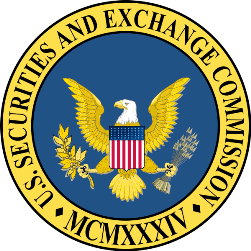Continuing Legal Education Verifying Accredited Investors
 The SEC Provides New Explanations Regarding Rule 506(c) Offerings
The SEC Provides New Explanations Regarding Rule 506(c) Offerings
On July 3, 2014 (right on my birthday), the SEC issued six compliance and disclosure interpretations ("CD&Is") regarding the use of verification methods for determining whether a prospective investor is accredited.
First, a bit of background information. Effective September 23, 2013, the SEC introduced Rule 506(c) that allows issuers to use general solicitation and advertising in conducting private placements so long as their actual investors are accredited (meaning wealthy and sophisticated individuals and/or certain entities). Companies that conduct 506(c) offerings must take "reasonable steps" to verify that all investors in their offerings are accredited and have a reasonable belief that such investors are accredited at the time of the sale of securities. Before the JOBS Act, and still while conducting Rule 506(b) offerings, companies could rely on investors' self-certification (for example, questionnaires where investors self-report their income and net worth). This is no longer enough for a successful Rule 506(c) offering. Instead, the companies or someone on their behalf must request and review evidence of investors' income or net worth.
An issuer may satisfy the verification requirement of Rule 506(c) by either using the principles-based method of verification or by relying upon one of the specific, non-exclusive verification methods listed in Rule 506(c)(2)(ii). Since these methods are non-exclusive, the issuers are not required to use any of them. However, if they do, then they must meet all of the requirements of the chosen method, including that the documents provided are current. Regardless of what steps the issuer takes, it is important to retain adequate records of the verification steps they took.
Next, let's review the acceptable methods of verification before discussing the new CD&Is.
Under the principles-based verification method, "the determination of what constitutes reasonable steps to verify is an objective determination based on the particular facts and circumstances of each purchaser and transaction." CD&I 260.07. Here, the issuers should consider factors such as the nature of the purchaser and the type of accredited investor it claims to be; the amount and type of information the issuer has about the investor; the nature of the offering and the manner of solicitation.
Specific, non-exclusive verification methods for natural personal include the following methods:
1. If the person's accredited investor status is based on income:
- reviewing any IRS form that reports the person's income for the two most recent years; and
- obtaining a written representation that the person reasonably expects to reach the income level required to qualify as an accredited investor in the current year.
2. If the person's accredited investor status is based on net worth:
- as to the person's assets, reviewing one or more of certain documents (including bank statements, brokerage statements and tax assessments) dated within the past three months; and
- as to the person's liabilities, reviewing a report from one of the national consumer reporting agencies and obtaining a written representation that the person has disclosed all liabilities necessary to make a net worth determination.
3. Obtaining a written confirmation from a certain type of third party (a registered broker-dealer or investment advisor, a licensed foreign or domestic attorney in good standing or a foreign or domestic CPA registered and in good standing) that the third party has taken reasonable steps to verify the person's AI status within the past three months and has determined that the person is an accredited investor.
There is also a fourth safe harbor that relates to individuals who invested in an issuer's Rule 506(b) offering as accredited investors prior to the effective date of Rule 506(c).
And now, let's finally discuss the new CD&Is.
The new CD&I 260.35 discusses the use of the income-based verification method and the requirement to rely on an IRS form that reports the person's income for the two most recent years. This method becomes unavailable during the first part of the year until the tax returns for the previous year have not yet been filed. According to the CD&I, the issuer then has to resort to other verification methods.
The new CD&I 260.36 explains that if the investor is not a US taxpayer and therefore does not have income tax returns, the income-based verification method is not available. So, the issuer has to resort to other verification methods.
The new CD&I 260.37 refers to the second, net worth-based, verification method. It underlines the importance that all documents provided by the investor regarding its assets and liabilities be dated within the prior three months. So, an annual tax assessment, if not dated within that time frame, would not be acceptable.
The next new CD&I 260.38 is also about the net worth-based verification method. It clarifies that a consumer report from one of the "nationwide consumer reporting agencies" means that such agency must be U.S.-based.
And finally, there are two new CD&Is (255.48 and 255.49) about the accredited status of an investor. Question 48 says that if the purchaser's annual income is not reported in the U.S. dollars, the issuer may use either the exchange rate that is in effect on the last day of the year for which income is being determined or the average exchange rate for that year. Question 49 states that if the assets in an account are owned jointly with another person who is not the purchaser's spouse, then it is still fine to include the assets in the calculation for the net worth test, but only to the extent of the purchaser's percentage ownership of the account or property.
Overall, the new CD&Is are undoubtedly helpful in providing guidance to the issuers that are conducting a Rule 506(c) offering. At the same time, the verification methods required of the issuers are becoming more complex and nuanced. Clearly, a careful study of all SEC guidance, the Rule itself, and the accompanying releases, is required before attempting to conduct a successful Rule 506(c) offering.
More recent developments
The SEC is not the only entity that is making navigation of Rule 506(c) requirements more difficult. On June 23, 2014, SIFMA issued guidance for registered broker-dealers and investment advisers regarding verification methods that they should use if a client asks for a written confirmation of their accredited investor status. In short, the guidance includes two general conditions: (i) that the client has maintained an account with them for at least six months; and (ii) the client makes a representation that it is making the investment for his or her own account or a joint account with the spouse, is not borrowing money to make this investment and is an accredited investor. The guidance then discusses specific verification methods that broker dealers or investment advisers are encouraged to use. Note that according to the guidance, only the existing clients can ask for the verification letter, and not just any prospective investor. This narrows the universe of potential investors seeking to prove their accredited status through third party verification method.
In conclusion, I want to caution anyone using Rule 506(c) to conduct a private placement. This Rule is an exclusive safe harbor, and non-compliance with the verification requirements may jeopardize the whole offering. Also, I'd like to say that for attorneys, it would be helpful to have some guidance from the Bar Association that, similarly to the SIFMA one, provides advice on attorney-issued written confirmation letters of accredited investor status.
 Read more commentary from Arina Shulga on the legal aspects of operating new and growing businesses at Business Law Post.
Read more commentary from Arina Shulga on the legal aspects of operating new and growing businesses at Business Law Post.
For more information about LexisNexis products and solutions, please connect with us through our corporate site .
Source: https://www.lexisnexis.com/legalnewsroom/banking/b/banking-finance/posts/how-to-verify-that-your-investor-is-accredited
0 Response to "Continuing Legal Education Verifying Accredited Investors"
Post a Comment